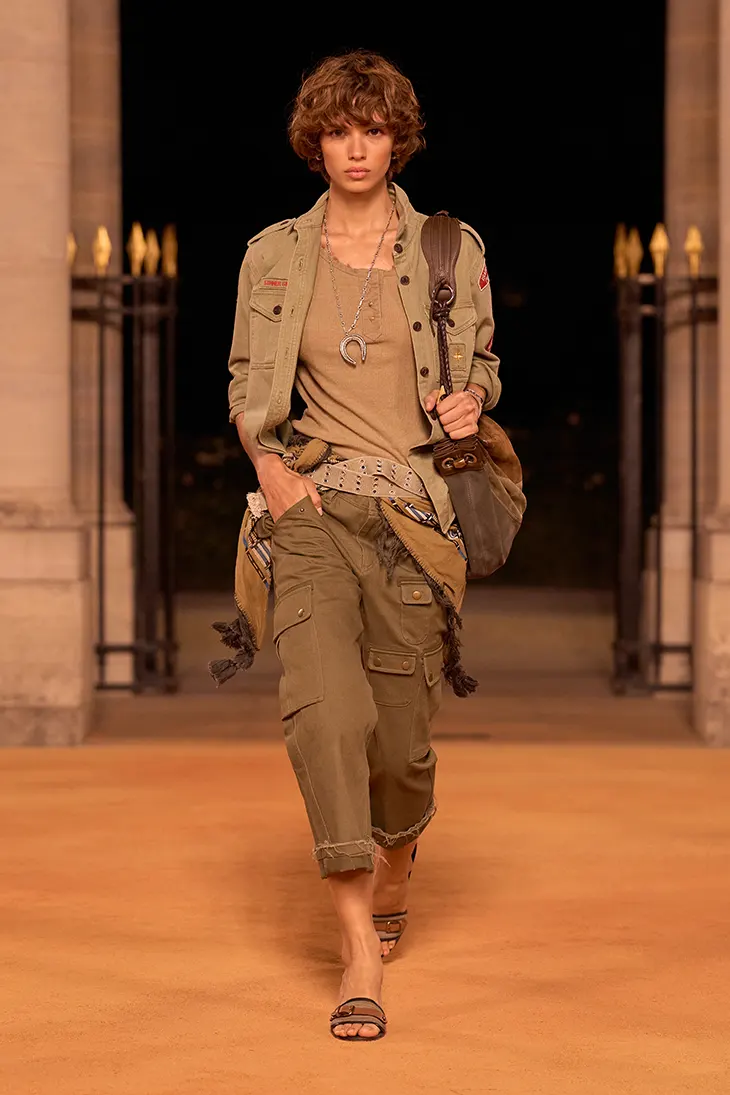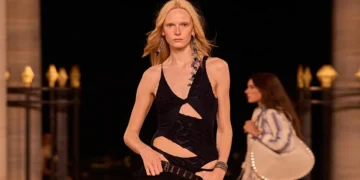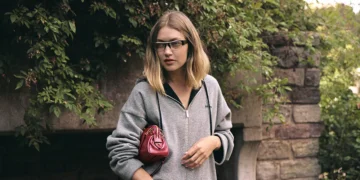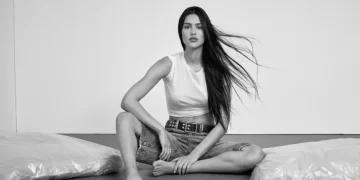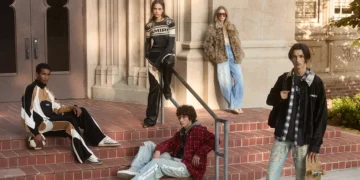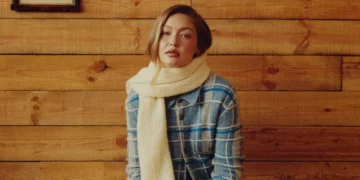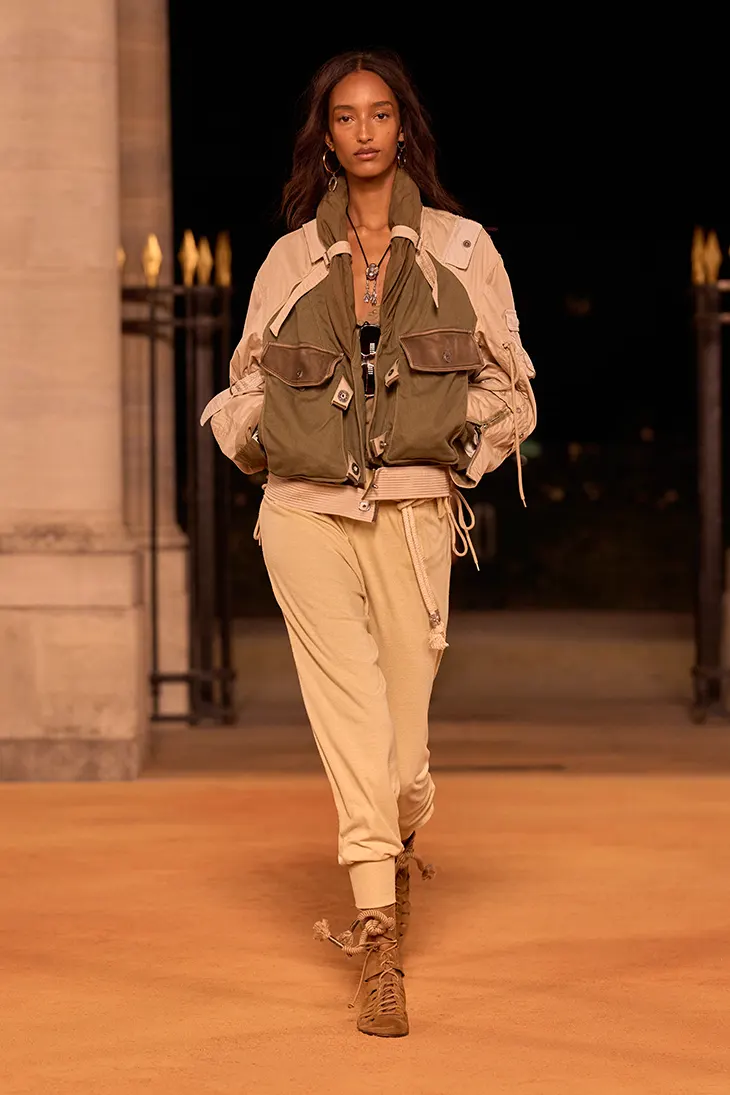
Isabel Marant’s Spring-Summer 2026 runway opened a new chapter under the direction of Kim Bekker, who greeted the audience at the finale in place of Marant herself. The show was a story of travel and transformation, drawn to the sun and imagined through the eyes of a woman who journeys alone. Washed silks and soft jerseys carried the impression of fabric weathered by time, while leathers appeared embossed and scorched by heat. Every surface detail spoke of distance and memory, a narrative shaped in texture rather than words.
SPRING SUMMER 2026
Embroidery played a central role. Totemic motifs and beaded fringes evoked ritualistic craftsmanship, while jewelry etched with bark-like patterns reinforced a connection to nature. Each garment carried a deliberate hand-shaped quality. Crochet in featherlight gauges floated around the body, scarves knotted at the waist introduced nomadic accents, and asymmetric ruffles coursed across tops and skirts with rhythm. The collection balanced ornament and restraint, always keeping movement at the center.
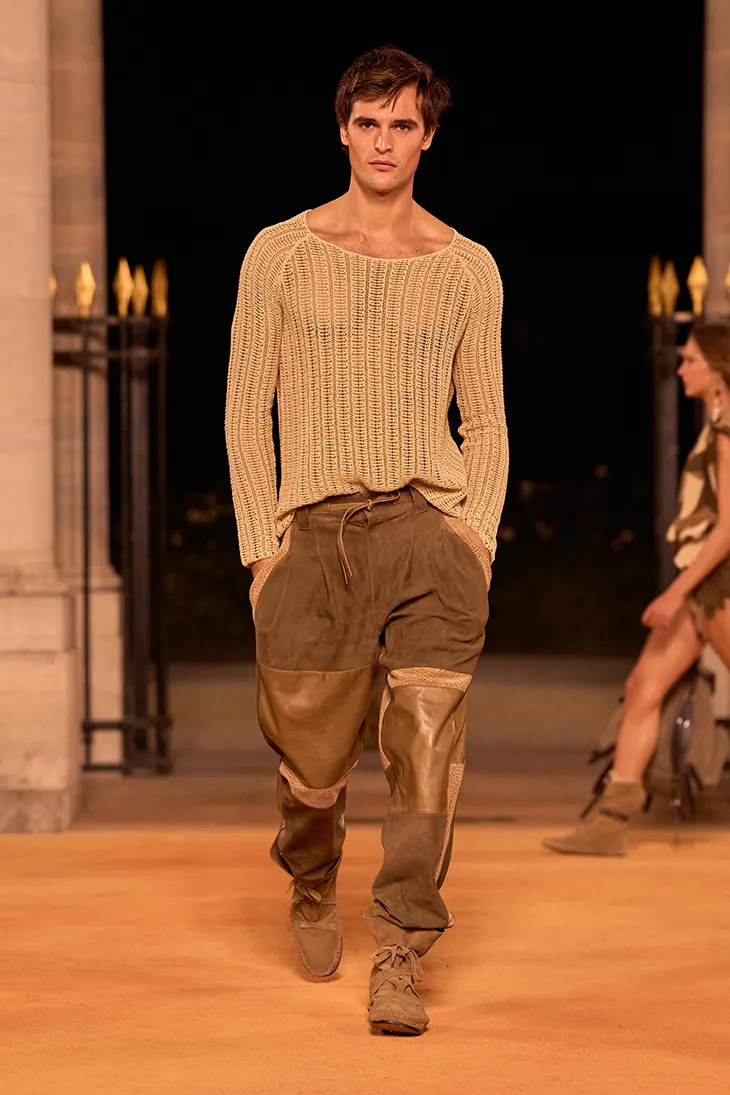
The show then turned toward a sharper vocabulary. Cargo trousers and jackets cut in weightless fabrics introduced utilitarian precision. Oversized flap pockets defined outerwear, while slouchy totes hung casually on shoulders. These notes of pragmatism never felt heavy; they leaned instead on fluidity and comfort, complementing the breezy dresses tied into knots that revealed flashes of bare skin.
Menswear and womenswear intersected through similar gestures. Cropped and rolled shorts defined both categories, suede vests punctuated with eyelets exposed shoulders, and open-knit tanks reinforced the collection’s emphasis on lightness. The wardrobe built itself around the idea of adaptability, exploring garments designed to move freely between climates, settings, and bodies.
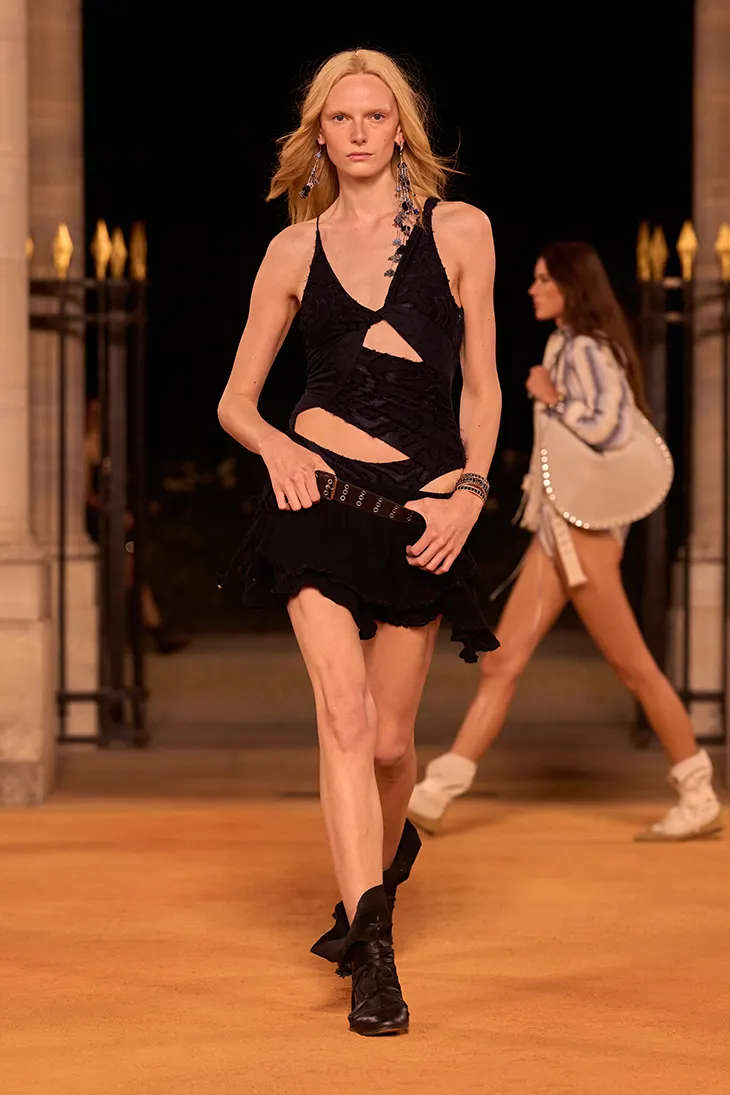
Color brought an additional sense of passage. Natural shades, sand, ecru, pale yellow, bronze, dominated the first half of the show. Blue denim appeared embroidered with floral bursts, signaling life in transit. As the sequence advanced, the palette darkened with the descent of evening: black emerged, violet followed, and then a constellation-like camouflage closed the show. Night had fallen at the Palais-Royal, and the atmosphere shifted from day’s heat to a cooler astral energy.
Bekker’s presence underscored the moment’s importance. Having worked alongside Marant in the past, she brings a deep familiarity with the house’s codes but also a willingness to refine them for the present. Her vision is attentive to detail, committed to movement, and sensitive to the balance between utility and romance. The collection suggested continuity, but also the start of a new dialogue, sunlit, weathered, and prepared to move the brand toward its next era.
